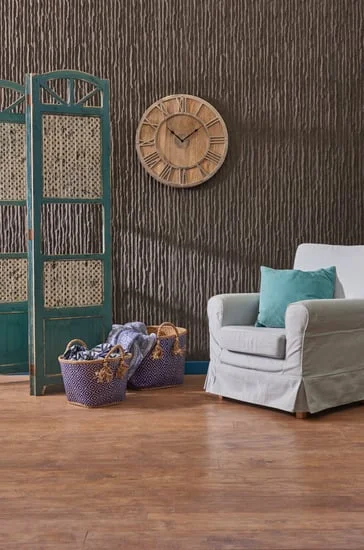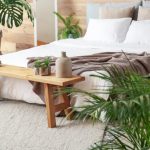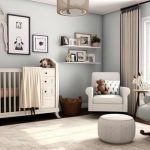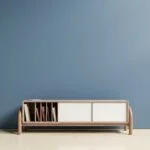Have you ever wondered how to integrate the elements in your home decor to create a cohesive and unified look? In this article, we will explore the importance of integration in home decor and provide practical tips on how to achieve a harmonious design in your living space.
When it comes to decorating your home, integrating the various elements such as color, texture, pattern, and statement pieces is essential for creating a visually appealing and balanced environment. From selecting the right color scheme to mixing different materials and arranging furniture for flow, there are several key aspects to consider when it comes to integrating elements in your home decor.
In the following sections, we will delve into these key aspects of home decor integration, offering valuable insights and actionable tips that will help you transform your living space into a stylish and cohesive haven. Whether you are looking to revamp a room or simply add some personal touches to your existing decor, understanding the importance of integration is paramount for achieving a well-designed and aesthetically pleasing home.
Selecting a Color Scheme
When it comes to integrating elements in your home decor, one of the most important factors to consider is selecting the right color scheme. The colors you choose will set the tone for your entire space and can greatly impact the overall feel of your home.
When choosing a color palette, consider the mood you want to create in each room. For example, cool tones like blues and greens can create a calming and serene atmosphere, while warm tones like reds and yellows can add energy and warmth to a space.
In addition to considering the mood, it’s also important to think about how different colors will work together throughout your home. Whether you opt for a monochromatic scheme or complementary colors, finding a cohesive color palette is essential for successful integration in your decor. Remember that neutrals can play an important role in balancing out bolder hues and can serve as a base for your design.
Once you have selected a color scheme, it’s essential to bring those colors into your space through various elements such as walls, furniture, decor accents, and textiles. By strategically incorporating your chosen colors throughout your home, you can ensure a harmonious and unified look that ties all of the elements together.
| Color Scheme | Effect on Mood |
|---|---|
| Monochromatic (e.g. varying shades of blue) | Create a sense of calm and simplicity |
| Analogous (e.g. adjacent colors on the color wheel) | Harmonious and visually appealing |
| Complementary (e.g. blue and orange or purple and yellow) | Add vibrancy and contrast |
Mixing Textures and Materials
When it comes to home decor, incorporating different textures and materials can add depth and visual interest to your space. Mixing elements such as wood, metal, and fabric can create a dynamic and layered look that adds personality to your home. One way to achieve this is by selecting furniture pieces and accessories that are made from different materials.
For example, you can pair a wooden coffee table with a metal side table or incorporate fabric throw pillows with a leather sofa. By mixing and matching materials, you can create a visually appealing space that feels balanced and cohesive.
In addition to furniture and accessories, you can also incorporate different textures into your decor through textiles such as rugs, curtains, and upholstery. Consider layering a jute rug with a soft shag rug or adding velvet curtains to complement a leather sofa. These combinations of textures not only add visual interest but also create a tactile experience in your home. Furthermore, integrating natural elements such as plants or stone accents can add another dimension of texture to your decor.
When mixing textures and materials in your home decor, it’s important to consider the overall color scheme and style of your space. While it’s beneficial to have variety in textures and materials, you’ll want to ensure that they complement each other harmoniously.
Pay attention to the scale of patterns and the visual weight of different elements to create a balanced look. By thoughtfully incorporating various textures and materials into your decor, you can elevate the design of your home while creating an inviting and comfortable atmosphere for both residents and guests alike.
Balancing Patterns
When it comes to creating a cohesive design in your home decor, balancing patterns is essential in achieving a harmonious look. Mixing different prints and patterns can add visual interest to your space, but it’s important to do so in a way that doesn’t overwhelm the room. Here are some tips for successfully incorporating patterns into your home decor:
- Start with a neutral base: When working with multiple patterns, it’s helpful to begin with a neutral color palette as the foundation of your design. This will provide a sense of balance and allow the patterns to stand out without clashing.
- Consider scale and proportion: Mixing various sizes of patterns, such as large geometric prints with smaller floral designs, can create visual contrast and add depth to the room. Be mindful of how different scales work together to achieve a balanced look.
- Stick to a consistent color scheme: While you can mix different patterns, sticking to a consistent color scheme will help tie everything together. Whether it’s through complementary colors or shades of the same hue, a unified color palette will create cohesion in your design.
By following these principles, you can successfully balance patterns in your home decor while creating a cohesive and visually appealing space.
In addition to considering the patterns themselves, it’s important to think about how they’re distributed throughout the room. For example:
- Distribute patterns evenly: Rather than clustering all of your patterned items in one area, spread them out throughout the room for a more balanced and cohesive look.
- Use patterned accents: If you’re hesitant about incorporating large amounts of pattern, consider using smaller doses through accent pillows, throws, or curtains for a subtle yet effective impact.
- Layer different textures: Mixing textures along with patterns can add another dimension to your decor. Consider pairing smooth fabrics with intricate patterns or rough textures for added depth.
Successfully balancing patterns in your home decor requires careful consideration and thoughtfulness, but when done right, it can elevate the overall aesthetic of your space.
Statement Pieces
When it comes to home decor, incorporating statement pieces can truly elevate the overall design of a space. These unique and eye-catching elements serve as focal points and conversation starters, adding personality and interest to any room. Here are some tips on how to effectively add statement pieces to your decor:
- Consider scale: When selecting a statement piece, consider the scale of the item in relation to the room. A large, bold piece can anchor a room and set the tone for the rest of the decor, while smaller statement pieces can be used to add pops of color or texture.
- Choose pieces that reflect your personal style: Whether it’s an oversized piece of artwork, a striking light fixture, or a sculptural accessory, make sure that the statement piece aligns with your personal style and complements the overall aesthetic of the space.
- Don’t be afraid to mix styles: Statement pieces are a great way to introduce different design styles into your decor. Don’t be afraid to mix modern and traditional elements or incorporate global influences for a more eclectic look.
Incorporating statement pieces into your home decor can instantly transform a room and create visual interest. Whether it’s through artwork, furniture, or decorative accessories, these unique elements have the power to tie a room together and make a memorable impression on anyone who walks in.
Remember that less is often more when it comes to statement pieces – one or two carefully curated items can have a greater impact than multiple competing focal points. By following these tips, you can successfully integrate statement pieces into your home decor for a stylish and cohesive look.
Creating Flow
Arranging Furniture
When it comes to creating flow in your home decor, the arrangement of furniture plays a crucial role. Start by considering the function of each room and how you want to use the space. For example, in the living room, arrange seating in a way that promotes conversation and connection.
In the bedroom, position the bed as the focal point to create a sense of relaxation and comfort. Additionally, be mindful of traffic flow and ensure there is enough space to move around without obstacles.
Accessorizing for Cohesion
Accessories are an essential part of home decor as they add personality and style to a space. However, when integrating different elements, it’s important to ensure that accessories harmonize with the overall design. Choose pieces that complement the color scheme and style of your home. For example, if you have a modern aesthetic, opt for sleek, minimalistic accessories. If your decor leans more towards traditional or eclectic, incorporate decorative items that reflect that style.
Creating Visual Continuity
To achieve a sense of flow in your home decor, aim for visual continuity throughout the space. This can be achieved through color coordination, repeating patterns or shapes, and maintaining a consistent design theme.
By creating visual connections between different areas of your home, you can establish a cohesive and harmonious environment that feels connected and unified. Whether it’s through coordinating color schemes or repeating similar materials and textures, visual continuity contributes to the overall integration of elements in your home decor.
Personal Touch
Personalizing your home decor is an essential aspect of creating a space that truly feels like your own. Incorporating meaningful items and personal artwork into your decor not only adds a unique touch but also helps to create a sense of warmth and comfort in your home.
Memories on Display
One way to incorporate a personal touch into your home decor is by displaying meaningful items that hold sentimental value. This could include family photos, heirlooms, or souvenirs from memorable trips. These items not only add personal significance to your space but can also serve as great conversation starters when entertaining guests.
DIY Artwork
Another way to personalize your decor is by creating or showcasing artwork that has a special meaning to you. Whether it’s a piece you’ve created yourself or artwork done by friends and family, incorporating these pieces into your decor can add a sense of pride and joy to your space. You can also consider framing meaningful quotes or phrases that resonate with you, adding an extra layer of personalization to your walls.
Showcasing Hobbies and Interests
Showcasing hobbies or interests through decor is another great way to personalize your space. Whether it’s sports memorabilia, musical instruments, or books related to a specific interest, integrating these elements into your decor not only adds personal significance but also creates a visually interesting environment that reflects who you are as an individual. By incorporating these items, you are creating a space that truly feels like yours and reflects the things that bring you joy and fulfillment.
Conclusion
In conclusion, successfully integrating elements in your home decor is essential for creating a cohesive and harmonious living space. By following the tips outlined in this article, you can achieve a well-balanced and visually appealing home environment.
Selecting the right color scheme is crucial in setting the tone for your decor. By carefully choosing a color palette that complements each other, you can create a unified look throughout your home. Additionally, mixing textures and materials such as wood, metal, and fabric adds depth and visual interest to your decor, making it more inviting and dynamic.
Balancing patterns and incorporating statement pieces are also important aspects of integrating elements in home decor. By combining different prints and adding unique focal points, you can create an eclectic yet cohesive design. Furthermore, arranging furniture and accessories to create flow within your space will contribute to a harmonious atmosphere.
Lastly, don’t forget to add a personal touch to your decor by incorporating meaningful items and personal artwork. Your home should reflect your personality and style, so adding these personal elements will make your space feel truly yours. With these tips in mind, you can confidently integrate different elements into your home decor for a stylish and well-coordinated look.
Frequently Asked Questions
What Is the 7 Elements of Interior Design?
The 7 elements of interior design include space, line, form, light, color, texture, and pattern. Each of these elements plays a crucial role in creating a cohesive and visually appealing interior space.
Space refers to the physical area within a room, while lines and forms can define the shapes and structure of furniture and decor. Light and color significantly impact the mood and atmosphere of a space, while texture and pattern add depth and visual interest.
How Do I Bring Natural Elements Into My Home?
Bringing natural elements into your home can be achieved by incorporating materials such as wood, stone, plants, or natural fibers like jute or cotton into your decor. You can add wooden furniture or accents for warmth and earthiness, use stone tiles or countertops for a natural feel, include potted plants for greenery and life, or incorporate natural fiber rugs or textiles for added texture.
These elements can help create a more organic and soothing atmosphere within your home.
What Are the 4 Elements of Decor?
The four elements of decor are color, pattern, texture, and function. Color choices greatly impact the overall look and feel of a room, setting the mood and establishing a cohesive aesthetic.
Patterns add visual interest while textures create depth and tactile appeal within a space. Additionally, considering the functionality of decor items is essential to ensure they not only look good but also serve their intended purpose within your home.

I’m thrilled to be your companion on this exciting journey through the world of home decor and design. With a passion for turning houses into homes and a keen eye for the finer details, I’m here to help you transform your living spaces into beautiful, functional, and meaningful havens.





